Iðunn
by Peter Krüger
©2014
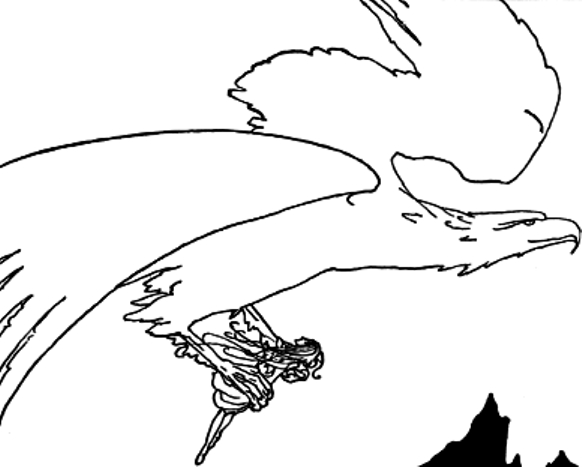 |
In October of 2014, archaeologists found a magnificient mosaic undoubtedly depicting the abduction of Persephone by Hades in a late 4th century BC Macedonian tomb in Amphipolis, with close connections to the royal family of Alexander the Great. The mosaic depicts a chariot drawn by a pair of white horses, which are lead by a youth wearing a petasos hat, winged sandals and carrying a type of staff known as a Caduceus, attributes which positively identify him as Hermes (Roman Mercury). The chariot is driven by a bearded man wearing a laurel wreath or crown. Even without the usual bird-tipped sceptre in his hand, he can only be Hades, king of the underworld. With one arm, he holds young woman, looking back for help —doubtless Persephone (See Some Thoughts on the Scenery of Hárbarðsljóð).
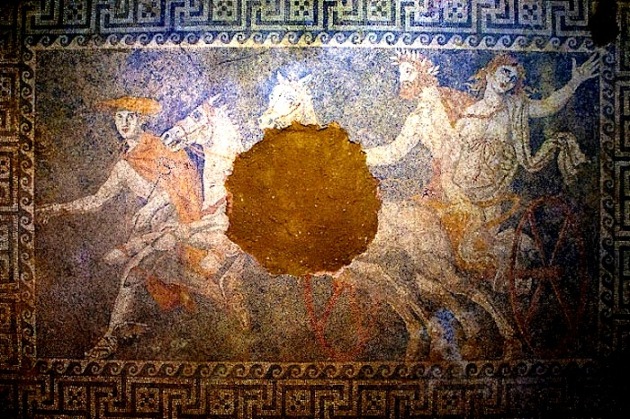 |
The mosaic corresponds
perfectly to other pictures, murals and vase paintings of this
scene. All the texts describing the myth of Persephone and pictures can
be found on the
Theoi-project page.
The pictures like the newly
discovered mosaic are interesting as the vary from the surviving texts.
If we read Homer for example, we are told that none of the gods besides
Hekate and Helios noticed the abduction. Hermes is not involved at all
in the abduction. But later on, when Zeus wants to rescue Persephone and
bring her back to Olympus, Hermes plays an active role:
"Now when all-seeing Zeus the loud-thunderer heard this, he sent Argeiphontes [Hermes] whose wand is of gold to Erebos, so that having won over Aides with soft words, he might lead forth chaste Persephoneia to the light from the misty gloom to join the gods, and that her mother might see her with her eyes and cease from her anger. And Hermes obeyed, and leaving the house of Olympos, straightway sprang down with speed to the hidden places of the earth.”
There are several differences in both myths but overall it is the same story: after the abduction of Persephone/Idunn by Hades/Thiazi the world is threatened with infertility, aging and death so that Persephone/Idunn have to be brought back from the underworld to bright daylight.
The full myth can be found in Skáldskaparmál (Rasmus Anderson Translation):
|
Hann hóf þar frásögn, at þrír
æsir fóru heiman, Óðinn ok Loki ok Hænir, ok fóru um fjöll
ok eyðimerkr, ok var illt til matar. En er þeir koma ofan í
dal nakkvarn, sjá þeir öxnaflokk ok taka einn uxann ok snúa
til seyðis. En er þeir hyggja, at soðit mun vera, raufa þeir
seyðinn, ok var ekki soðit. Ok í annat sinn, er þeir raufa
seyðinn, þá er stund var liðin, ok var ekki soðit. Mæla þeir
þá sín á milli, hverju þetta mun gegna. Þá heyra þeir mál í eikina upp yfir sik, at sá, er þar sat, kvaðst ráða því, er eigi soðnaði á seyðinum. Þeir litu til, ok sat þar örn ok eigi lítill. Þá mælti örninn: "Vilið þér gefa mér fylli mína af uxanum, þá mun soðna á seyðinum." Þeir játa því. Þá lætr hann sígast ór trénu ok sezt á seyðinn ok leggr upp þegar it fyrsta lær uxans tvau ok báða bóguna. Þá varð Loki reiðr ok greip upp mikla stöng ok reiðir af öllu afli ok rekr á kroppinn erninum. Örninn bregzt við höggit ok flýgr upp. Þá var föst stöngin við bak arnarins, en hendr Loka við annan enda stangarinnar. |
Bragi began his tale by telling how three Asas, Odin, Loki and Honer, went on a journey over mountains and heaths, where they could get nothing to eat. But when they came down into a valley they saw a herd of cattle. From this herd they took an ox and went to work to boil it. When they deemed that it must be boiled enough they uncovered the broth, but it was not yet done. After a little while they lifted the cover off again, but it was not yet boiled. They talked among themselves about how this could happen. Then they heard a voice in the oak above them, and he who sat there said that he was the cause that the broth did not get boiled. They looked up and saw an eagle, and it was not a small one. Then said the eagle: If you will give me my fill of the ox, then the broth will be boiled. They agreed to this. So he flew down from the tree, seated himself beside the boiling broth, and immediately snatched up first the two thighs of the ox and then both the shoulders. This made Loki wroth: he grasped a large pole, raised it with all his might and dashed it at the body of the eagle. The eagle shook himself after the blow and flew up. One end of the pole fastened itself to the body of the eagle, and the other end stuck to Loki’s hands. |
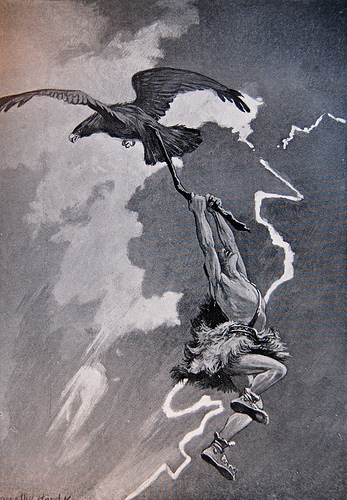 |
|
| Örninn flýgr hátt
svá, at fætr Loka taka niðr grjót ok urðir ok viðu, en hendr
hans, hyggr hann, at slitna munu ór öxlum. Hann kallar ok
biðr allþarfliga örninn friðar. En hann segir, at Loki skal
aldri lauss verða, nema hann veiti honum svardaga at koma
Iðunni út of Ásgarð með epli sín, en Loki vill þat. Verðr
hann þá lauss ok ferr til lagsmanna sinna, ok er eigi at
sinni sögð fleiri tíðendi um þeira ferð, áðr þeir koma heim. En at ákveðinni stundu teygir Loki Iðunni út um Ásgarð í skóg nökkurn ok segir, at hann hefir fundit epli þau, er henni munu gripir í þykkja, ok bað, at hon skal hafa með sér sín epli ok bera saman ok hin. Þá kemr þar Þjazi jötunn í arnarham ok tekr Iðunni ok flýgr braut með ok í Þrymheim til bús síns. |
The eagle flew just high enough so that Loki’s feet were dragged over stones and rocks and trees, and it seemed to him that his arms would be torn from his shoulder-blades. He calls and prays the eagle most earnestly for peace, but the latter declares that Loki shall never get free unless he will pledge himself to bring Idunn and her apples out of Asgard. When Loki had promised this, he was set free and went to his companions again; and no more is related of this journey, except that they returned home. But at the time agreed upon, Loki coaxed Idunn out of Asgard into a forest, saying that he had found apples that she would think very nice, and he requested her to take with her her own apples in order to compare them. Then came the giant Thjassi in the guise of an eagle, seized Idunn and flew away with her to his home in Thrymheim. |
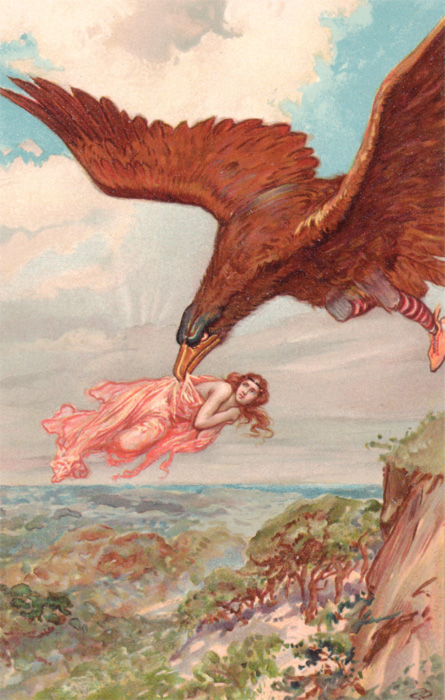 |
|
In a rather strange twist to the story, the abduction of Idunn is preceded by an abduction of Loki. The description of Loki hanging on a pole below an eagle becomes interesting if we compare it with the main attribute of Hades —the bird-tipped sceptre. Can there be a connection? The word Hades means “the Invisible”, so maybe we just see the bird-tipped sceptre in this scene.
It seems that in the Idunn myth the two figures of Persephone and her mother Demeter coincide. Whereas Idunn is the owner of the golden apples, in Homer Demeter is “the lady of the golden sword and glorious fruits” and it is she who will not “let fruit spring out of the ground” as long Persephone is in the underworld.
Also the end of the story is different. Wheras Hades could be convinced by Hermes to allow Persephone to return (at least for some months) to Olympus, Loki must rescue her himself:
|
En æsir urðu illa við hvarf Iðunnar, ok gerðust þeir brátt hárir ok gamlir. Þá áttu þeir æsir þing, ok spyrr hverr annan, hvat síðast vissi til Iðunnar, en þat var sét síðast, at hon gekk út ór Ásgarði með Loka. Þá var Loki tekinn ok færðr á þingit, ok var honum heitit bana eða píslum. En er hann varð hræddr, þá kvaðst hann mundu sækja eftir Iðunni í Jötunheima, ef Freyja vill ljá honum valshams, er hon á. Ok er hann fær valshaminn, flýgr hann norðr í Jötunheima ok kemr einn dag til Þjaza jötuns. Var hann róinn á sæ, en Iðunn var ein heima. Brá Loki henni í hnotarlíki ok hafði í klóm sér ok flýgr sem mest. En er Þjazi kom heim ok saknar Iðunnar, tekr hann arnarharminn ok flýgr eftir Loka, ok dró arnsúg í flugnum. En er æsirnir sá, er valrinn flaug með hnotina ok hvar örninn flaug, þá gengu þeir út undir Ásgarð ok báru þannig byrðar af lokarspánum. Ok þá er valrinn flaug inn of borgina, lét hann fallast niðr við borgarvegginn. Þá slógu æsirnir eldi í lokarspánuna, en örninn mátti eigi stöðva sik, er hann missti valsins. Laust þá eldinum í fiðri arnarins, ok tók þá af fluginn. Þá váru æsirnir nær ok drápu Þjaza jötun fyrir innan ásgrindr, ok er þat víg allfrægt. |
The Asas were ill at ease on account of the disappearance of Idun,—they became gray-haired and old. They met in council and asked each other who last had seen Idun. The last that had been seen of her was that she had gone out of Asgard in company with Loki. Then Loki was seized and brought into the council, and he was threatened with death or torture. But he became frightened, and promised to bring Idunn back from Jotunheim if Freyja would lend him the falcon-guise that she had. He got the falcon-guise, flew north into Jotunheim, and came one day to the giant Thjassi. The giant had rowed out to sea, and Idunn was at home alone. Loki turned her into the likeness of a nut, held her in his claws and flew with all his might. But when Thjassi returned home and missed Idun, he took on his eagle-guise, flew after Loki, gaining on the latter with his eagle wings. When the asas saw the falcon coming flying with the nut, and how the eagle flew, they went to the walls of Asgard and brought with them bundles of plane-shavings. When the falcon flew within the burg, he let himself drop down beside the burg-wall. Then the asas kindled a fire in the shavings; and the eagle, being unable to stop himself when he missed the falcon, caught fire in his feathers, so that he could not fly any farther. The asas were on hand and slew the giant Thjassi within the gates of Asgard, and that slaughter is most famous. |
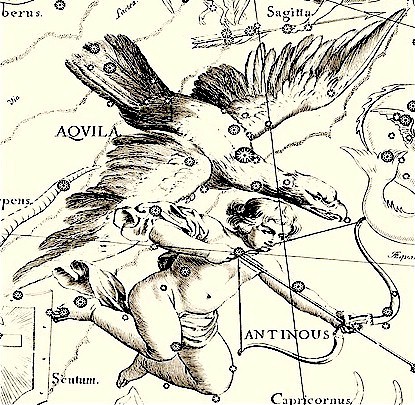 |
|
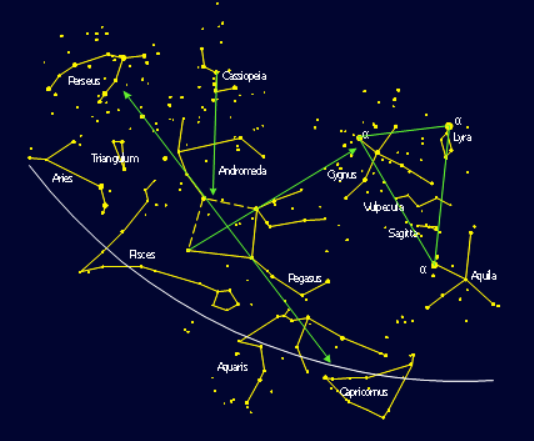 |
Is Thiazi identical to Hades? Actually I don’t think so. The connection is rather that both stand for death and wintertime.
One question remains, in many depictions of the abduction of Persephone and in the texts we find the goddess Hekate, holding normally one or two torches in her hand. Does she have a Northern equivalent, can she maybe be compared with Skadi, the daughter of Thiazi?